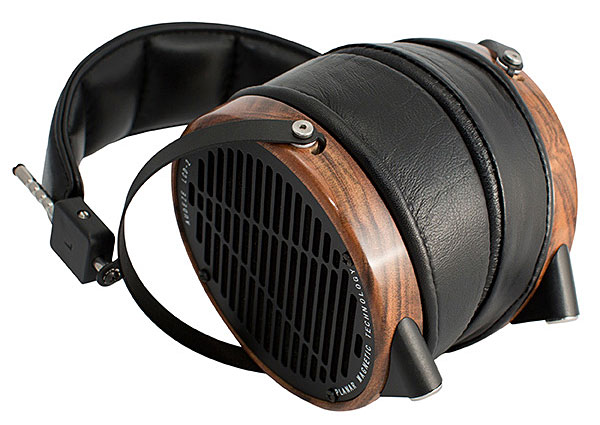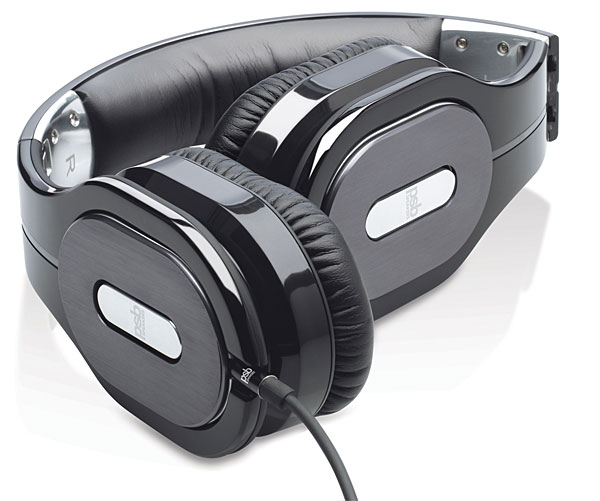Download
Popular Posts
-
Gibboni and the Gibbon: At Stereo Exchange’s annual Spring High-End Audio Show, Roger Gibboni (left) of Rogers High Fidelity debu...
-
Hey, we were in earthquake country, the land from which Carole King may have received inspiration to write, "I Feel the Earth Move...
-
A reader once noted that I tend to stick with the same reference gear longer than most reviewers. In addition to Audience's Au24e i...
-
The Enigmacoustics company from Irvine in California has become renowned for the self-energized, horn-loaded Sopranino electrostatic su...
-
Today, Sony announced an end to production on all MiniDisc players. In a few years, MiniDisc production will cease as well. I know w...
-
Silicon Valley–based Velodyne was founded in 1983 to develop a range of subwoofers that used servo-control to reduce non-linear distorti...
-
The name sounds perfect . It fits neatly next to those of Messrs. Leak, Sugden, Walker , Grant, Lumley, and others of Britain's...
-
I've heard a lot of great audio components over the years, but even in that steady stream of excellence, a few have stood out as so...
-
Once upon a time, in audio's infancy, anyone who wanted better than average sound—average sound during the 1940s being rich, boomy a...
-
I've long kept an eye on Michael Creek's loudspeakers (Epos) and electronics (Creek). He's always moving forward, with eith...
Market information
Blog Archive
-
▼
2013
(510)
-
▼
December
(15)
- This Christmas!
- Audience Au24 SE interconnect
- The Best Jazz Recordings of 2013
- Meet Mat Weisfeld, President of VPI Industries
- The Fifth Element #82
- Audio Beginnings
- My Favorite Records of 2013
- The Entry Level #36
- Lossy Compression: the Sonic Dangers
- Electrocompaniet Classic ECD 2 D/A processor
- Simaudio Moon Evolution 850P line preamplifier
- Listening #132
- Parasound Halo CD 1 CD player
- Stereophile's Products of 2013
- Wilson Audio Specialties Alexia loudspeaker
-
▼
December
(15)
The Entry Level #36

With the LCD-2s, Lefsetz rediscovers his music collection, hears new details in old favorites, and is transported to the recording studio, where he emotionally connects with artists and producers. Of "So Little Time to Fly," from Spirit's 1969 album, Clear (CD, Epic/Legacy 65002), Lefsetz writes: "It's the bass! You can hear it. As for Randy California's vocal . . . you can see him alone in the studio, singing. You can see the mixer grinning as he adds the final touches. All the elements separate, they're clearly defined. It's like putting on glasses after a lifetime of presbyopia." Lefsetz sounds like an audiophile.
He's right, too. At the moment, I'm listening to "So Little Time to Fly." Listen with me, if you like. You don't have to own a copy of the recording; you can find it, and pretty much everything else, for free on the Internet. I'm listening via YouTube, and at around 1:27, it sounds as if the guitarist (Randy California?) slides into a wrong note. Fortunately, the rest of the band holds steady. The bassist (Mark Andes?) is particularly rock-solid. Without him, I figure the song would sound like a disjointed mess.
Speaking of bass: When discussing today's popular headphones, it's pretty much impossible to avoid Beats by Dr. Dre. You know this, I know this, Lefsetz knows this. He contrasts the Audeze LCD-2 with the new Beats Studio closed-back headphone, a product so damn good-looking and downright hip that even I want it, sound unheard. "These are not fashion accessories," Lefsetz says of the LCD-2. "Not something you parade around in to demonstrate how hip and fashionable you are. Consider them the anti-Beats."
The anti-Beats? Why must we be so negative? What if you want a high-quality audio accessory that's also an attractive fashion accessory? What if you want something that demonstrates how hip you are? What if you want the same kind of attention received by those who proudly wear Beats? Lefsetz addresses none of this.
He does, however, raise the topic of price. To achieve this level of sound quality—"the most fantastic listening experience you'll have all year," Lefsetz says—you'll have to spend $1145. "But it's worth it!"
Again, Lefsetz is right. I've held the beautifully built LCD-2s in my hands, placed their luscious leather earpads over my lucky ears, enjoyed the glorious sound they make. The LCD-2s are worth the money, sure, but who has that kind of money to spend on headphones? I don't. My friends don't. I suspect most average consumers don't.
Lefsetz nevertheless makes a valiant attempt to justify the LCD-2s' high price, while also addressing the high-end audio industry's inability to attract a wider audience: "The problem is too much of this expensive stuff is purchased by tweaks who are more into the gear than the music. They quote specs and tech and your eyes glaze over and you move on."
Lefsetz almost sounds like Tinwoman, Avoider of Audiophiles, whom Art Dudley vivisects in this issue's "As We See It." Audiophiles, Tinwoman generalizes, do not listen to music, only to gear. (And she says that as if it's a bad thing!) Lefsetz's tweakers are Tinwoman's audiophiles. Lefsetz and Tinwoman are right and wrong. I agree that many hi-fi enthusiasts are more interested in the gear itself than in the music the gear is intended to reproduce, but I don't blame them for hi-fi's limited appeal. It's their money—they can spend it however they please, just as they can discuss whatever topics they please. Why should their healthy interest in technical specifications deter my desire to hear exciting music beautifully reproduced?
Lefsetz continues: "There aren't enough music fanatics exposed to this great stuff and spreading the word. . . . So I'm just making you aware of these Audezes."
With that, he almost redeems himself. I absolutely agree that too few music lovers have been exposed to true high-fidelity sound. In making more people aware of the Audeze LCD-2s, Bob Lefsetz has done a service to the high-end audio industry, hi-fi enthusiasts, and music lovers; but in focusing on one very esoteric and exclusive product, he has also missed an opportunity to introduce his readers to more versatile and affordable options, like the Skullcandy Aviator ($149.99), B&W P3 ($199.99), and Harman/Kardon CL ($199.99). In fact, he almost makes it sound as if you have to spend $1000 to enjoy a true high-quality listening experience.
"Do I expect you to spend a grand?" he writes. "No. But you should."
I neither expect you to spend $1000 nor think that you should. Unless, of course, you want to. It's your money. But I do want you to know this: In between the wildly fashionable but underachieving Beats Studio and the sonically spectacular but unapologetically inconvenient Audeze LCD-2, there exists an entire world of worthwhile headphones. Some of them actually look as good as they sound. They are free from enormous wooden earcups that require regular oiling. They can be taken with you wherever you go. You might even be able to afford them.
Allow me to make you aware of the PSB M4U 2 and Sennheiser Momentum over-the-ear headphones.
PSB M4U 2 noise-canceling headphones
Why, after 40 years of designing and building loudspeakers, has PSB (footnote 1) entered the headphone market? When I visited him at Canada's National Research Council facility in Ottawa, in May 2012, PSB's chief engineer, Paul Barton, explained that he was working to bring his knowledge of loudspeaker engineering to the relatively new and fast-growing world of portable hi-fi.
In the M4U 2 ($399.99), Barton has designed closed-back, circumaural, noise-canceling headphones with a 40mm dynamic driver in each earcup. The M4U 2 uses PSB's Room Feel equalization technology, designed to produce an open, three-dimensional sound similar to what one might experience when listening to high-end speakers in a typical listening room.

"The experience we have with sound reproduction using loudspeakers in-room has helped to shape our performance targets for headphones," Barton recently explained via e-mail. "Understanding the relationship of speakers and room interaction is important when you use headphones to listen to music intended for playback on loudspeakers in a room. Isn't this the music that most people are listening to on headphones?"
I'm not sure. I suspect that most of today's pop, rock, hip-hop, and R&B—and even much post-punk and experimental music—is recorded to sound good through headphones. "M4U" stands for Music for You. But who is You, exactly? Younger music enthusiasts, I suspect—those who've grown up on MP3s and iTunes, but who nevertheless care deeply about music and who have at least a casual interest in sound quality.
According to Barton, market and lifestyle trends dictated the M4U 2's overall look and feel: "We wanted a little fashion and a good-quality build for the person on the go." Like so many of today's headphones, the M4U 2 physically resembles Beats' ubiquitous Studio model: expandable headband; foldable, high-gloss, polycarbonate frame (available in white, black, or red); large, well-cushioned earpads. David Farrage, of the design firm DF-ID, is responsible for all of this.
The M4U 2s are indeed sturdy and very well built; they're also big and bulky. Out of the box and with the headband fully contracted, they measure approximately 7.5" W by 8" H by 2.75" D and weigh about 12oz. When I wear them, the distance between the outer planes of the earcups increases to 9.5", making me feel like an astronaut or bobblehead doll. While Barton admits that some listeners might prefer a smaller headphone, his general feeling is that an audio component's visual design must not impede its sound. "For PSB, form and function must be in perfect balance."
Although the PSBs are designed to look fashionable, their large size (and my own insecurity) kept me from wearing them in public. Nevertheless, the soft earpads easily accommodated my ears, and the headphones themselves always felt very comfortable on my head. (The average human ear measures 2.5" from top to bottom; the PSB's earpad exceeds that by about 1.25".) I could easily listen for hours without feeling any sort of pain or discomfort.
Footnote 1: PSB Speakers International, 633 Granite Court, Pickering, Ontario L1W 3K1, Canada. Tel: (905) 831- 6555. Web: www.psbspeakers.com
Source : stereophile[dot]com

- Không có bài viết liên quan

Comments[ 0 ]
Post a Comment